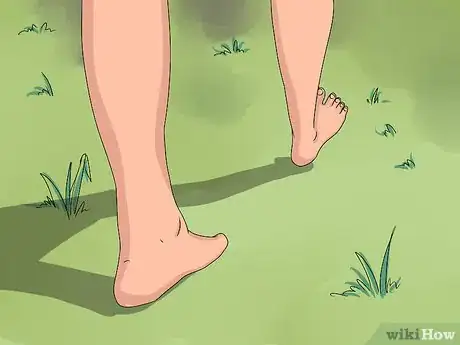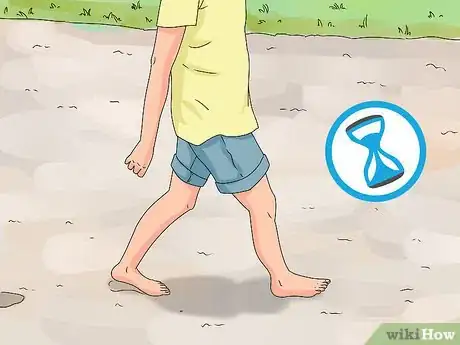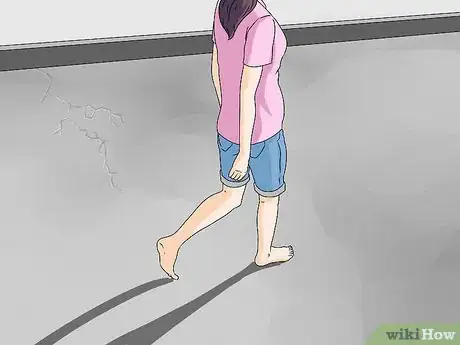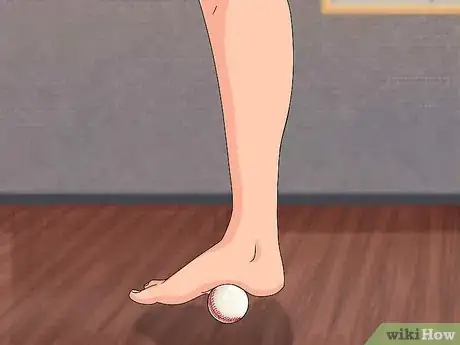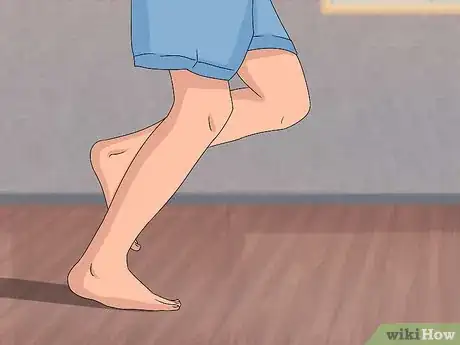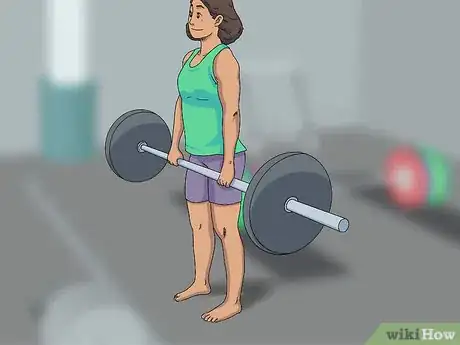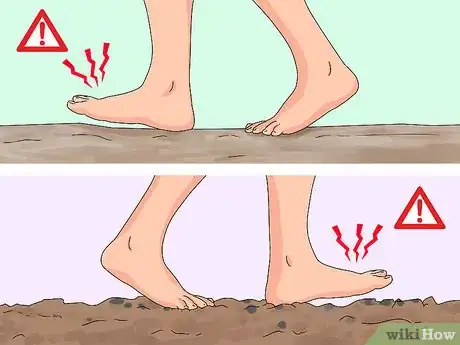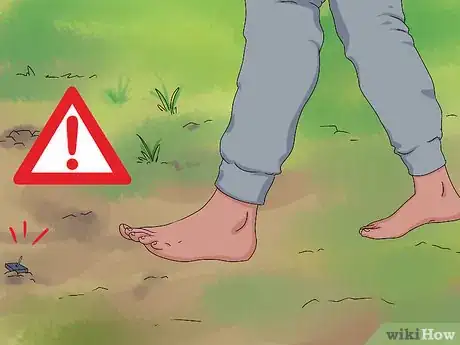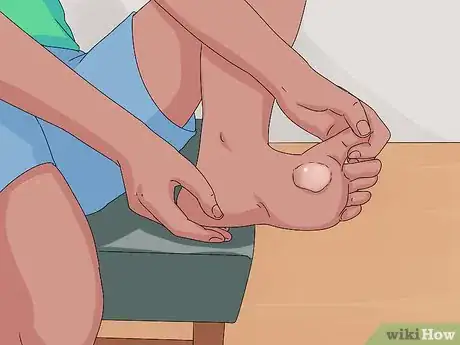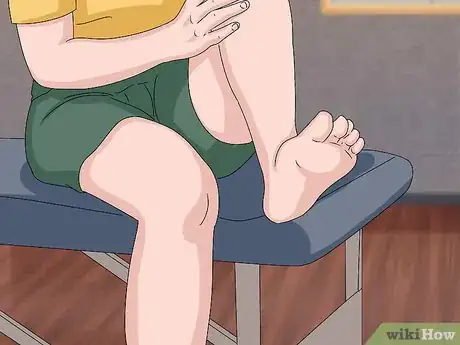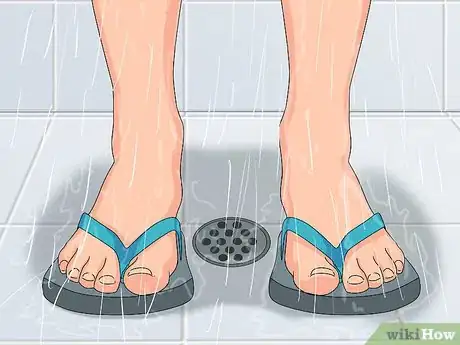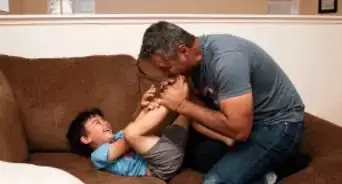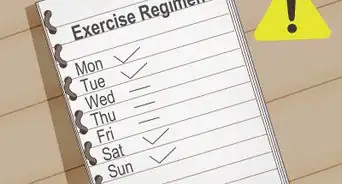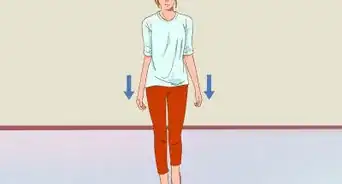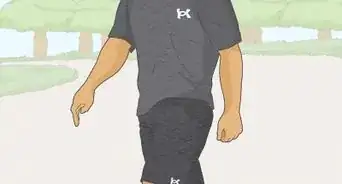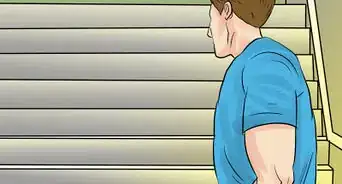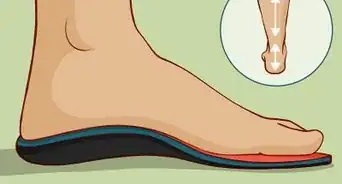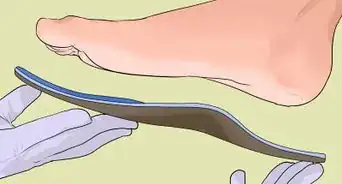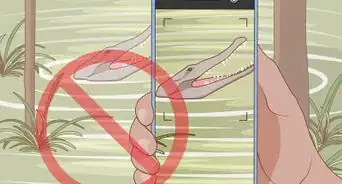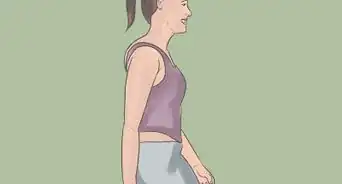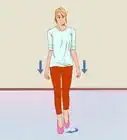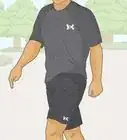This article was co-authored by Francisco Gomez. Francisco Gomez is the Head Coach at the FIT Potato Gym, a training gym established in 2001 in the San Francisco Bay Area. Francisco is a former competitive runner who helps endurance athletes train for major marathons like the Boston Marathon. Francisco specializes in Injury Rehab, Flexibility, Marathon Training, and Senior Fitness. He has a B.S. in Nutrition and Exercise Physiology & Running.
There are 8 references cited in this article, which can be found at the bottom of the page.
This article has been viewed 25,471 times.
Going barefoot can be fun, relaxing, and surprisingly good for your health. Leaving your shoes and socks behind offers a range of benefits from enhancing your proprioception and strengthening your muscles to making your feet more agile, not to mention making you feel healthy and alert! But like everything else in life, there's a right way and a wrong way to go barefoot, so in this article, we'll help you learn how to do barefooting the right way.
Steps
Spending More Time Barefoot
-
1Decide if you want to start going barefoot more often. Think back to all those times when you wanted to live an unshod life but could not (being shy, unsure how others will react, thinking your feet are gross, etc.). Try replacing such negative thoughts with positive ones.
- You need to be barefoot in order to start going barefoot, so remove your shoes and socks; it feels especially good if you have had a rough day at either work or school.
- Play with or wiggle your toes. This helps loosen any tense muscles inside your feet and help get the blood flowing, enabling you to relax more easily. Either give your toes gentle tugs or try massaging them.
- Like any other form of physical activity, going barefoot may result in injury if you try to do too much too quickly. Go barefoot for short periods of time in comfortable environments.
- Remember that the muscles of your feet have most likely atrophied from being supported by your shoes, and it will take time to build them up again.
-
2Gradually increase the amount of time you spend barefoot. As you spend more time walking around without shoes, the soles of your feet will get thicker and will be better able to withstand longer periods of activity without protection. Look for new places within your daily routine where you can go barefoot, and try to go without shoes for a longer period each week.Advertisement
-
3Adjust to different surfaces. When first starting out, the cleaner the surface, the more comfortable going barefoot will be. Contrary to popular belief, sand and grass are more dangerous since there can be things hidden there that you cannot see, and humans have perfectly evolved to go barefoot. Start out on a sidewalk, preferably a clean one, and eventually your feet will teach themselves to ignore the gravel lining the street.
- See if there is a park or trail near you specifically for going barefoot. These often have paths specifically designed for walking over different types of surfaces, and may have places to store shoes and wash your feet after a walk. These places are also called barefoot reflexology parks.
Exercising Barefoot
-
1Work on strengthening and conditioning your foot and calf muscles. These muscles have to work harder when you’re not wearing shoes, so building up strength in these muscles will help you transition into going barefoot.
- You can strengthen the many muscles and tendons in your foot and get them all working together by doing exercises that require a lot of posture changes, such as pilates, yoga, martial arts, and dance.[1]
- “Rolling” your calf muscles and your plantar fascia – the web of connective tissue in the arch of your foot – can help them loosen up and relieve pain. Grab a tennis or lacrosse ball and put it under your arch or your calf. Put as much weight as possible on it, and roll it around the area for about five minutes while flexing your foot or ankle. Do this once or twice a day.[2]
-
2Transition into barefoot running or exercise very slowly. You use different sets of muscles when walking around with or without shoes, so even if you’re currently running long distances in running shoes, you should only go shorter distances at first when going barefoot. Start by running only a couple of minutes at a time without shoes and gradually increase the length of your runs.[3]
-
3Adjust your running form so that you take lighter, faster steps and land under your hips. Most people take steps landing in front of their center of gravity while running, causing force to spring back at them and brake. Barefoot runners tend to land with their feet under their hips, which puts some of that impact force, reflected back by your muscles and tendons, propelling you off the ground. If you're having trouble, set a metronome to 170-175 bpm and coordinate your footsteps with its beat.[4] [5]
- It's important to keep it natural and do what feels right to you. If you force a forefoot strike, your calves and Achilles tendon will pay the price. Some people touch the ground lightly with their heel and place their weight on the balls of their feet.
- Run on a smooth but abrasive surface like a sidewalk. If you get blisters on your feet, it is a telltale sign your form needs work.
-
4Check to see whether your local gym requires socks or shoes. When you go barefoot while doing exercises like lifting, you may be able to strengthen additional muscles. To ease into working out barefoot in a gym setting, start with yoga, pilates, or barre classes that usually prohibit shoes.[6]
- Be aware that working out with bare feet on gym equipment that is not properly cleaned can lead to bacterial or fungal infections. Also, take care to avoid surfaces that may cause scratches or rug burn on your feet.
Protecting Your Feet
-
1Think ahead of time about what surfaces you’ll encounter while barefoot. Adjust your activities or your route if you want to go barefoot but think you may encounter an environment that is too hard or sharp for your feet. Plan to protect your feet from unexpected temperatures, such as heat-retaining black pavement.
-
2Pay more attention to where you’re stepping. Watch the ground in front of your feet so that you can avoid stepping on sharp or dangerous objects such as rusty nails. If you get a puncture wound or deep cut while going barefoot, see your doctor immediately.
-
3Check your feet often for common injuries. Blisters and stubbed toes are typical when first starting out going barefoot. Minor burns may also occur if you’re going barefoot on a hot day. Pay close attention to your feet and treat any injuries right away. Your feet will get more adaptable in time, but a part of it is knowing not to go out in very hot weather.
-
4Take any foot or leg pain seriously. Going barefoot can lead to more stress in your lower extremities, and may be more likely to cause injuries such as stress fractures or Achilles tendinitis. Watch out for symptoms of these and other injuries, and see your doctor if you’re having difficulties.
-
5Protect yourself from disease. Going barefoot is safer than you might think – the thick skin on the soles of your feet does a good job protecting you from germs. Non-breathable footwear is often a contributing factor to athlete's foot, since the fungus needs moisture and dark places to grow, and by keeping your feet open to the air, there won't be any moisture nor dark places for the fungus to grow.
-
1
- If there are any open wounds, wait for it to heal, and do not expose it to dirt or grit, like you would every wound.
- Hookworm can be contracted while going barefoot in developing countries in areas containing fecal matter, so wear shoes in these environments. Make sure they are effective against hookworm, as hookworm can pass through regular shoes.
- Bare feet are surprisingly dirt-resistant and easier to clean than your shoes. Enjoy getting your feet as dirty as you can, but remember to wash them with soap and water afterwards. Another benefit of being a barefooter is not getting athlete's foot nor foot odor (feet get smelly in shoes if you do not wear socks or if you are on them all day, and that sweat has nowhere to go).
Expert Q&A
-
QuestionHow should I start training for barefoot running?
 Francisco GomezFrancisco Gomez is the Head Coach at the FIT Potato Gym, a training gym established in 2001 in the San Francisco Bay Area. Francisco is a former competitive runner who helps endurance athletes train for major marathons like the Boston Marathon. Francisco specializes in Injury Rehab, Flexibility, Marathon Training, and Senior Fitness. He has a B.S. in Nutrition and Exercise Physiology & Running.
Francisco GomezFrancisco Gomez is the Head Coach at the FIT Potato Gym, a training gym established in 2001 in the San Francisco Bay Area. Francisco is a former competitive runner who helps endurance athletes train for major marathons like the Boston Marathon. Francisco specializes in Injury Rehab, Flexibility, Marathon Training, and Senior Fitness. He has a B.S. in Nutrition and Exercise Physiology & Running.
Fitness Coach Only go short distances when you start so you get used to the pace and feeling running barefoot. As you get more comfortable, try increasing your distance by 10% every week to condition your body.
Only go short distances when you start so you get used to the pace and feeling running barefoot. As you get more comfortable, try increasing your distance by 10% every week to condition your body. -
QuestionCan going barefoot prevent foot odor because my feet kind of smell?
 ZoeyCommunity AnswerIt will. Your feet get stinky in shoes if you wear no socks or if you exercise a lot, because your feet are one of the sweatiest parts of your body and that sweat has nowhere to go inside shows. Going barefoot can help a lot.
ZoeyCommunity AnswerIt will. Your feet get stinky in shoes if you wear no socks or if you exercise a lot, because your feet are one of the sweatiest parts of your body and that sweat has nowhere to go inside shows. Going barefoot can help a lot. -
QuestionWhy does going around barefoot feel good?
 ZoeyCommunity AnswerFresh air is going on your feet instead of them being trapped in shoes all hot and sweaty. It's also the natural state and walking barefoot allows the feet to flex properly.
ZoeyCommunity AnswerFresh air is going on your feet instead of them being trapped in shoes all hot and sweaty. It's also the natural state and walking barefoot allows the feet to flex properly.
Warnings
- Understand whether your local laws prohibit going barefoot. All 50 states in the U.S. allow people to go barefoot in public places, but some cities and counties may prohibit it. Laws may vary in other countries, so look up your local laws or contact your local health department to see whether laws exist that may prohibit going barefoot.⧼thumbs_response⧽
- Know that businesses may refuse service to barefooters, especially in fancy places, like dine-in restaurants. However, it could be considered discrimination, and you could sue.[8] [9]⧼thumbs_response⧽
References
- ↑ https://www.sciencedaily.com/releases/2015/11/151117181929.htm
- ↑ https://www.marksdailyapple.com/how-to-prepare-for-barefooting/
- ↑ https://zenhabits.net/barefoot-running/
- ↑ https://www.sciencedaily.com/releases/2010/01/100127134241.htm
- ↑ https://zenhabits.net/barefoot-running/
- ↑ https://www.self.com/story/barefoot-training
- ↑ https://www.prevention.com/fitness/fitness-tips/a20439811/barefoot-walking-how-to-do-it-safely-without-injury/
- ↑ https://www.footfiles.com/wellness/relaxation/article/its-perfectly-legal-to-go-barefoot-in-stores-and-restaurants
- ↑ http://www.shakelaw.com/blog/refusal-of-service/
